Colors, smells, monumental figures and traditional Oaxacan rugs were displayed in the center of the capital of Oaxaca to adorn the celebration of the Day of the Dead and confirm what the world knows: in Mexico, Death, with a capital D, is treated with affection, offerings of food, drink, candles are placed before it and even an artistic tribute is paid to it.
Using wet earth, lime and glitter, groups and art students from Oaxaca placed monumental carpets sculpted with wet sand, glitter, lime and pigments in the Plaza de la Danza, outside the Templo de la Soledad, representing natural elements, figures representing the worldview of regional pre-Hispanic cultures and figures from national history such as Frida Kahlo.
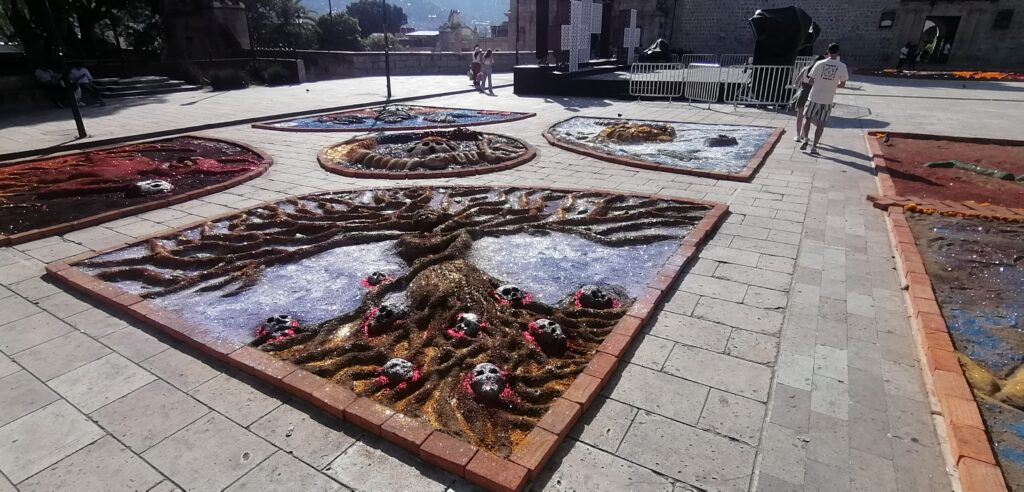
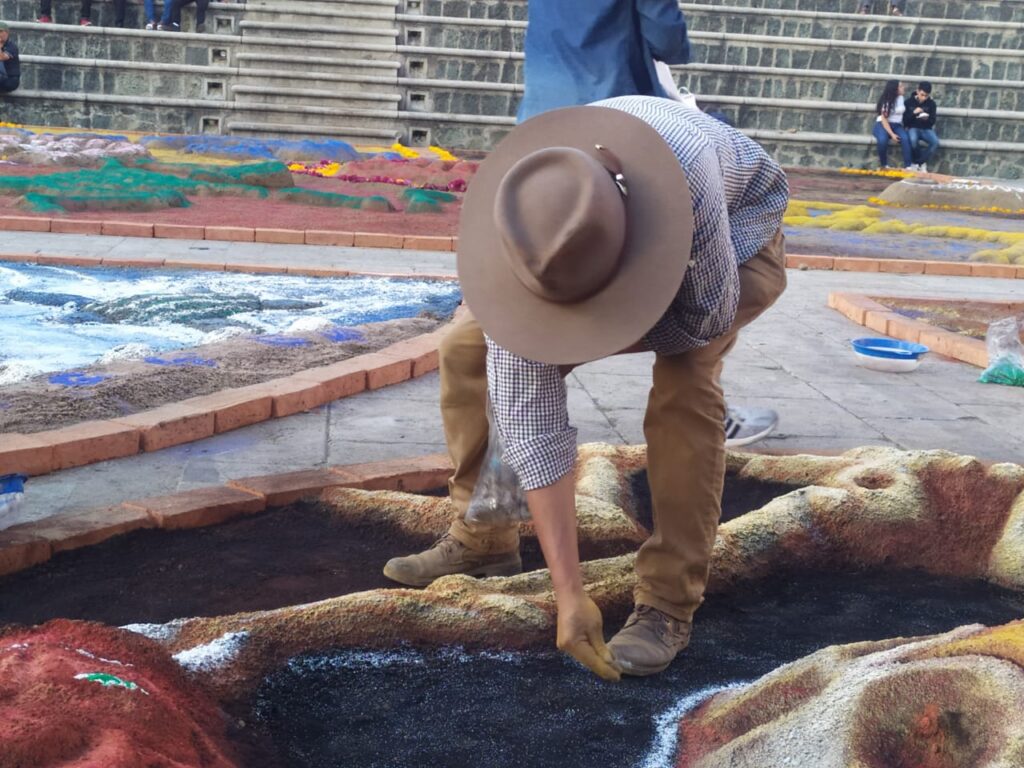
The square was divided into four spaces of 12 by 12 meters for the students of the Faculty of Plastic and Visual Arts of the Benito Juarez Autonomous University of Oaxaca ‒UABJO‒ and three artistic collectives: La Soledad de Villa de Zaachila, Encuentro Cultural and the residents of Macuilxochitl.
Walking among the natural elements, water, fire, earth and air, was the main idea developed by the UABJO students on the mat, which they divided into five: one for each of the elements and a central mat that represents the eternal, dialectical cycle between life and death, represented by a two-headed snake surrounding the flower of life.
The young people discussed, shared ideas, debated what was most appropriate and finally decided to perform the performances as a demonstration that artistic work, even if done with the hands, requires intellectual effort: "It takes me the..." reads the fire mat where a Devil emerges from the flames, quite muscular, holding a skull and with a playful grimace.
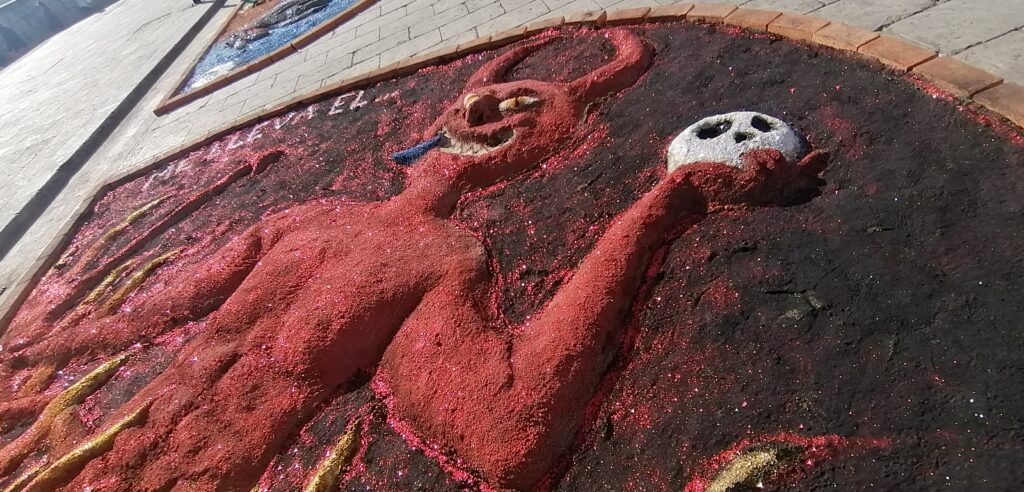

For the earth, a woman, giver of life, who seems to grow from the roots and, at the same time, extend towards the sky through the branches of a tree. Water was represented by the Mixtec god Dzahui surrounded by the sea. And the wind was imprinted on the ground with a figure of three children holding three balloons: a skeleton, a bat and a hummingbird, one of the representative images of the air.
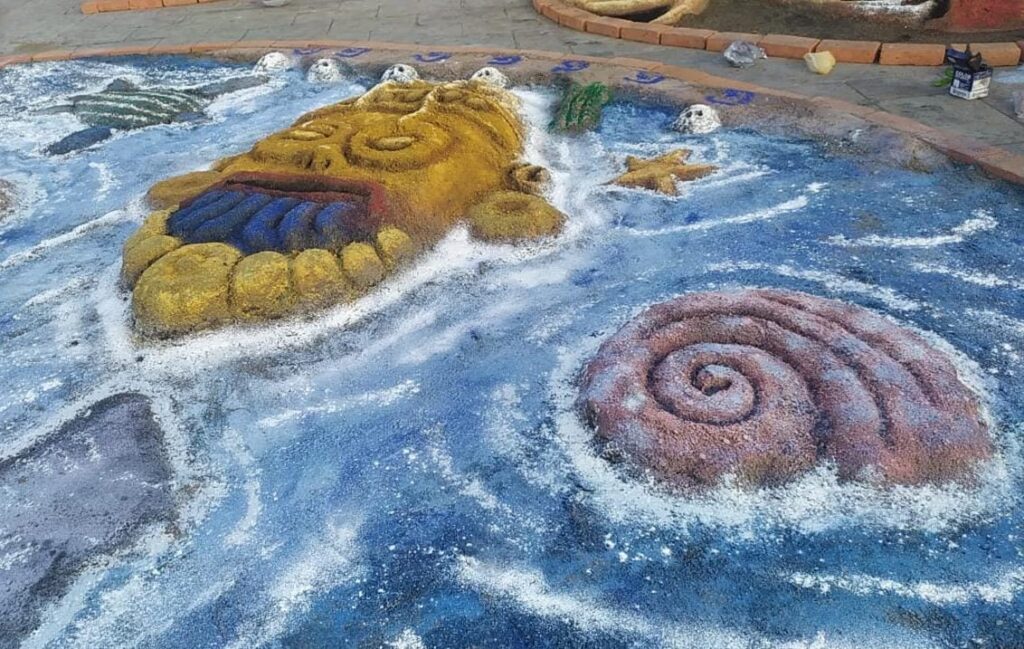
What could be the task of artists if not to use their skills as a hammer to shape reality, as Bertolt Brecht would say? Thus, the young people overcame difficulties with ingenuity and hard work: after two days of working from dawn to dusk, on the water mat the students decided to mix the blue pigment with white to change the shades of the water and simulate sea foam in response to the problem of not having enough color.
«Three to four people worked for two days on each mat. In my case, I am not so satisfied because we did not have enough blue pigment, but we were able to mix it with white. In fact, we simulated foam with the white pigment and we were able to solve it,» Alexa López, from the third semester C, explained self-critically.
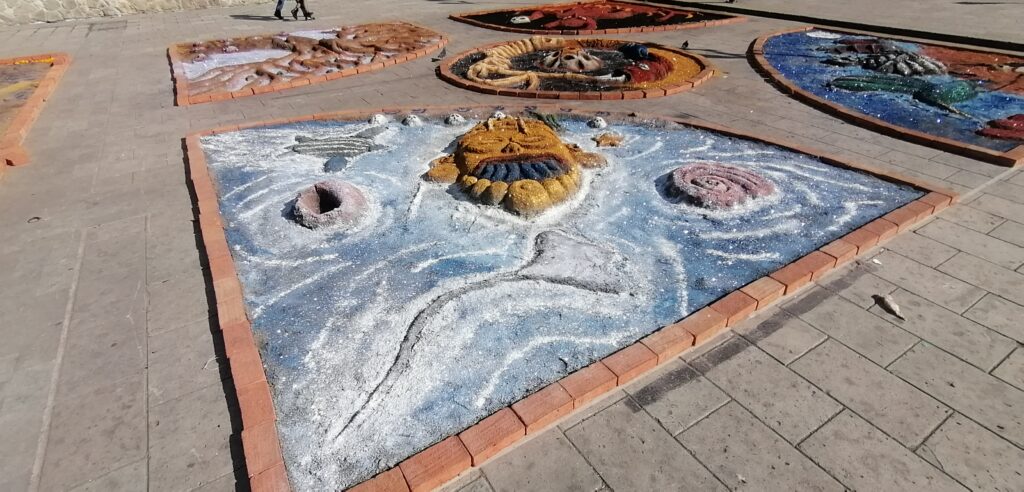
However, Uriel Rojas, from the same class, was satisfied with his work and also explained to Península 360 Press the creative process, which included the marmots, the monumental figures that always accompany the festivities in Oaxaca.
"In my team we started thinking about ideas wanting to make some kind of marmots, but we wanted something that carried the air element so we opted for balloons and we wanted to maintain the Oaxacan aspect of the marmots and yes, that idea is more or less maintained but we wanted to represent it with the balloons but to maintain the essence of the marmot, that's why the three people below are holding the balloons," explained the young man.
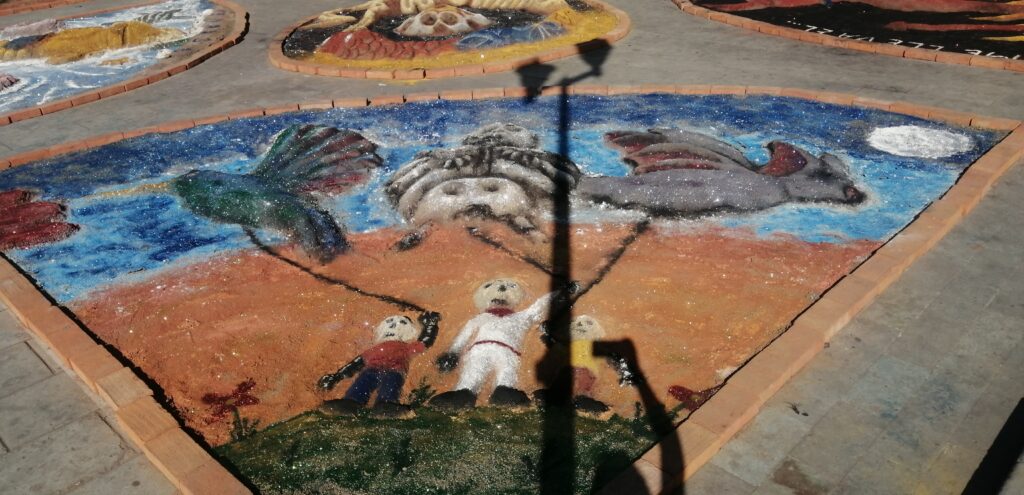
With strong regional roots, the Alexa team's discussion followed similar paths: the representation of a Mixtec water god, Dzahui, prevailed over the proposal for the representation of Tláloc, more characteristic of the Valley of Mexico.
Other rugs made were the “Elementals” rug, made by the Encuentro Cultural collective, with two paths representing day and night and the four cardinal points; the rug “Offerings to Death, Life and Not So Living,” made by residents of Macuilxochitl with a giant skull and “Frida Dances with Death,” as a call to live with death, without fear and with joy because in the face of death, we are all equal.
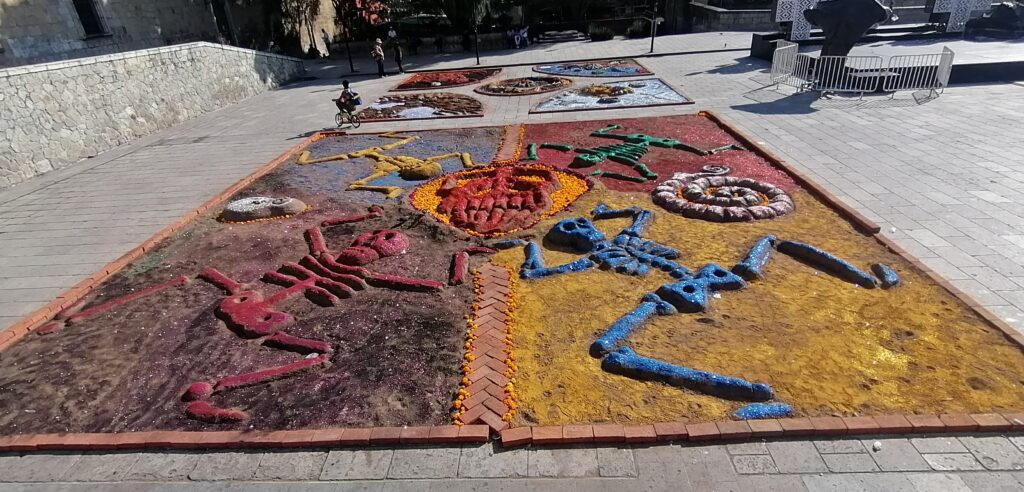
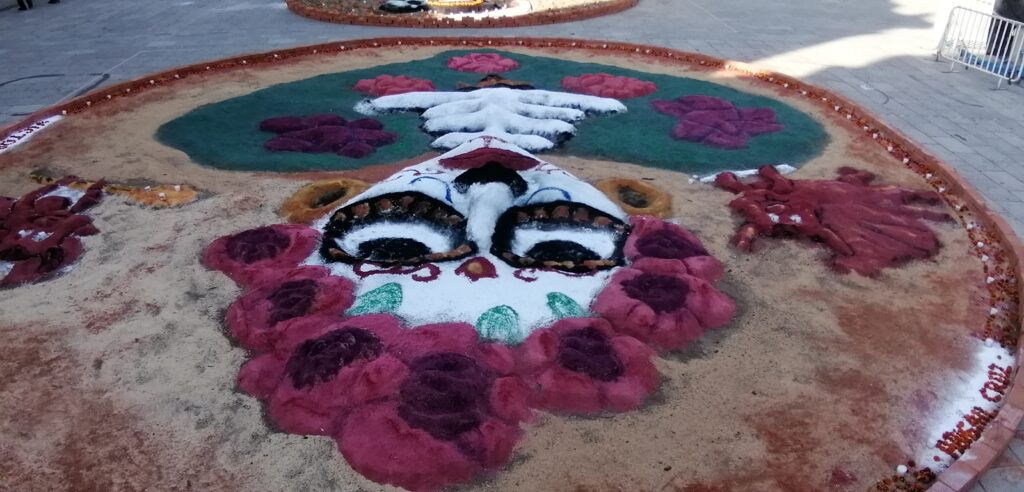
You may be interested in: Flor de Cempasúchil, a legend of love that became a tradition




